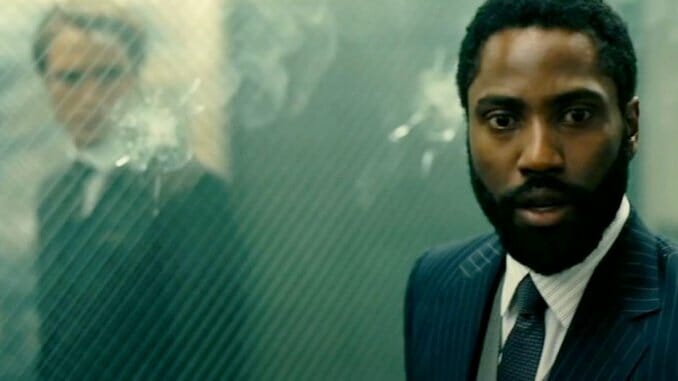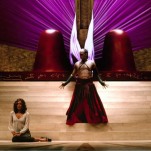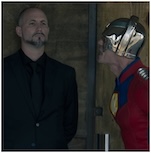Tenet Scores a 10 on the Technical Even as It Wavers on Interpretation

Christopher Nolan makes puzzle boxes. They are complex. They are ornate. And just as with actual puzzle boxes, the success of his films lies somewhere at the nexus of determination, comprehension and faith for those who encounter it. A willingness to forge ahead, to try and make sense of this particular puzzle (in Nolan’s case, usually several interwoven puzzles), requires an increasing understanding of what the rules are and persevering faith both that the underlying mechanisms actually work and what is hidden in the box will be worth all that effort in the first place.
So what kind of puzzle box is Tenet? At first glance, it’s a lot like Inception. The central conceit that powers it is both cerebral and requires copious on-screen exposition. There’s nothing inherently wrong with this. Nolan’s films always have at least one person trying to get their head around what exactly is going on, and it makes sense the audience would be as confused as the Protagonist (John David Washington), especially early on. Also, as with Inception, Tenet is basically a series of heists—smaller puzzle boxes within the larger one—which means while the viewer may not understand exactly what’s going on big picture, they will find the immediate action briskly paced and compellingly presented.
Finally, like Inception, Tenet boasts strong performances from an A-list cast (in ability if not box office draw). As antagonist Andrei Sator, Kenneth Branagh is especially riveting, chewing each scene with such gusto and menace you feel sorry for anything caught in his jaws. This makes the fear and despair of his estranged wife, Kat (Elizabeth Debicki, allowed here to be tall), less tired clichéd obstacle to overcome and more, “Can ya blame her?” (In the annals of menacing criminals played by British thespians, Branagh’s performance belongs up there with Ben Kingsley’s Don Logan in Sexy Beast and Michael Gambon’s Albert Spica in The Cook, the Thief, His Wife and Her Lover.)
-

-

-

-

-

-

-

-

-

-

-

-

-

-

-

-

-

-

-

-

-

-

-

-

-

-

-

-

-

-

-

-

-

-

-

-

-

-

-

-








































